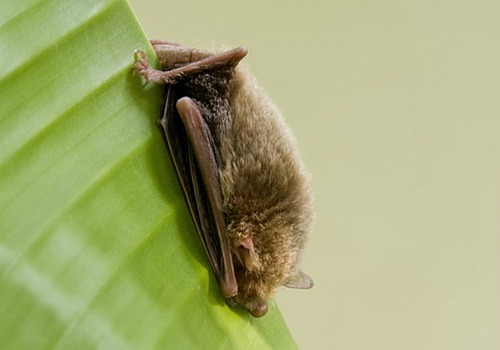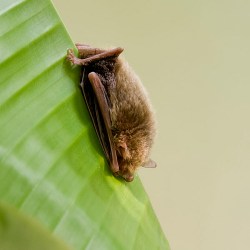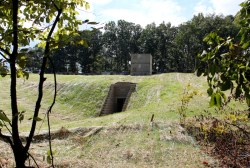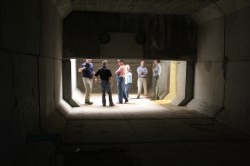So the election’s over, the days are getting shorter, and it’s about time for a nice long nap. May I suggest an 80-foot-long concrete chamber, tucked neatly into a hillside in Tennessee? Clean, cool, and cozy, it’s the perfect winter hideaway … if you’re a bat, that is. Yes, The Nature Conservancy of Tennessee has opened the world’s first artificial cave for hibernating bats. Now they just need some bats to move in.
The cave is intended as a refuge from white-nose syndrome, a fungal disease that’s devastated bat populations in the northeastern U.S. and beyond. Since the first diseased bats were found in an upstate New York cave six years ago, white-nose syndrome is thought to have killed more than 5 million bats from seven species, and it spreads especially quickly when bats gather in caves to hibernate. TNC hopes that some Tennessee bats will spend the coming winter in the new, fungus-free artificial cave. When the bats leave in the spring, the cave can be disinfected and safely used again.
That’s the idea, anyway. But there’s no blueprint for an artificial bat cave, and though TNC consulted with climate engineers and bat experts to make the cave as bat-friendly as possible, the $300,000 project is a gamble: No one’s sure if nearby bats will find the cave, or if they’ll like it enough to stay.
The cave opened for business just before Halloween, and while Cory Holliday, who’s led the TNC effort, hasn’t seen any bats near the cave yet, he won’t give up hope for the season until late November or early December. In the meantime, he’s playing recordings of ultrasonic bat calls near the cave, hoping to draw in a few curious bats for a visit. And if no one shows up this year, well, he’ll try again next fall.
It’s an audacious, valiant effort, and it just might save some bats. But it’s also expensive, time-consuming, and chancy — the kind of thing you do when you’ve just about run out of options.
During the last few years, I’ve written about fake bat caves and roosts, sperm banks for coral reefs, laboratory hacks to protect tropical frogs from disease, and a decades-long (and ultimately successful) effort to lure Atlantic puffins back to their former habitats in Maine. These are fascinating stories, and often inspiring. But they’ve made me wonder: In the age of peak oil and peak soil and peak-what-have-you, are we also sliding down the far side of peak conservation?
We haven’t run out of oil, at least not yet — it’s just getting more difficult and more expensive to find. Likewise, there are still plenty of opportunities, large and small, to protect what’s left beyond the pavement. But the work is getting harder, and it’s hard enough already. Conservationists, take a cue from the bats and snooze when you can: It’s tough out there.






